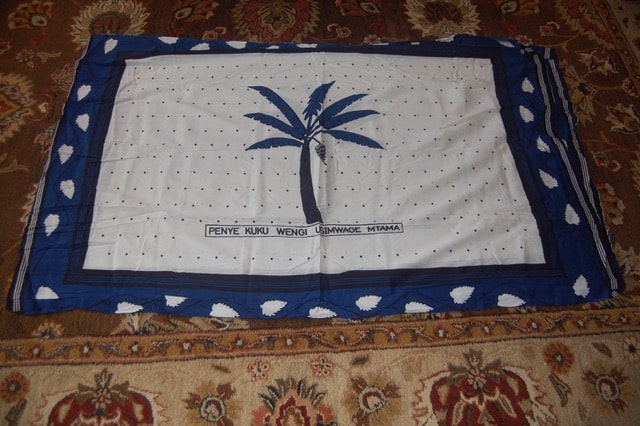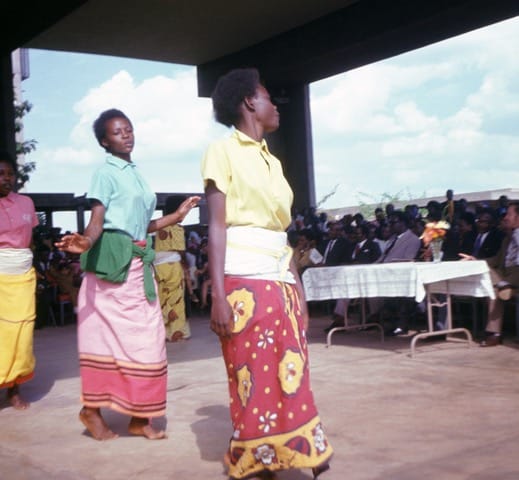It’s noon on a special day at Tororo Girls School. There have been speeches all morning as the girls dressed in their school uniforms sat silently, row upon row. But now the speeches are over and the girls are laughing with excitement as they run to their dorms. It’s time to change into traditional outfits and perform the dances they have been practicing for weeks. Some students will perform the dances of their home region. Others have chosen to learn the dances of their friends.
When the girls rush from the dorms they return in a blur of colorful busuti (dresses), khangas (wrap-around skirts) and head ties, some with drums and whistles in hand. The girls are eager to display their dancing abilities, and the audience—many of them parents—are just as eager to see this annual Parents Day display of Uganda’s diverse cultures. Parents have traveled from all parts of Uganda to honor and be honored by their daughters.

Uganda became a nation in 1962. The country’s size (about 93,000 square miles) is approximately the same size as the State of Oregon. The popullation (approximately 45 million people) is equivalent to California, Washington, and Idaho combined. Within this territory, there are approximately 60 indigenous groups whose members speak more than 50 separate languages. The students at Tororo School represent many of these groups. This makes the management of diversity both challenging and important.
I was teaching English in this boarding school in eastern Uganda. This school was unique among Uganda schools because these students were from every corner of the country. Living and studying together, they learned each other’s customs and traditions, along with their science, history, math and English. And the dancing they would perform on Parents Day wearing the varieties of Uganda’s local traditional costumes are manifestation of this cultural diversity. The audience is just as eager to see them, for today is Parents Day, an annual day of celebration at this school. I was given a busuti of my own. I wish that I would have worn it on Parents Day, even though I would not be dancing.

The busuti is the traditional dress of women in some regions of Uganda. Khangas are rectangular cloths worn by men and women in East Africa as skirts, turbans, blouses, headwraps, and baby carriers. Seeing some of my students in their traditional clothes, I was struck by the significance of clothing in any culture. Clearly, school uniforms would not lend themselves to the movement of the various dances. Traditional dress was integral to many dance movements.
Many years later I met a former Tororo student who told me this school taught her to respect and appreciate the other ethnic groups of Uganda. She added that for Parents Days, she had chosen to learn and perform the dances of different regions and this, too, gave her a broader understanding of other cultures. I told my former student that the school did the same for me as a Peace Corps volunteer.
I have donated the busuti I was given by my students and five khangas to the Museum of the Peace Corps Experience. I often wore these outfits in Uganda and brought them home in 1972. The khangas have been popular in Uganda and many neighboring countries for more than a century. The Swahili texts printed on khangas are often riddles, aphorisms, metaphors, a poetic phrase, or proverbs expressing personal, political, social and religious ideas and aspirations.
Wearing these traditional dresses helped me to better understand the cultures of East Africa. I hope the busuti and khangas add meaning for those who will see them in the Museum’s collection.
Note: Gail Wadsworth served in the Peace Corps in Uganda, 1970-72, Kenya 1973-76, and Tanzania 1980-82









